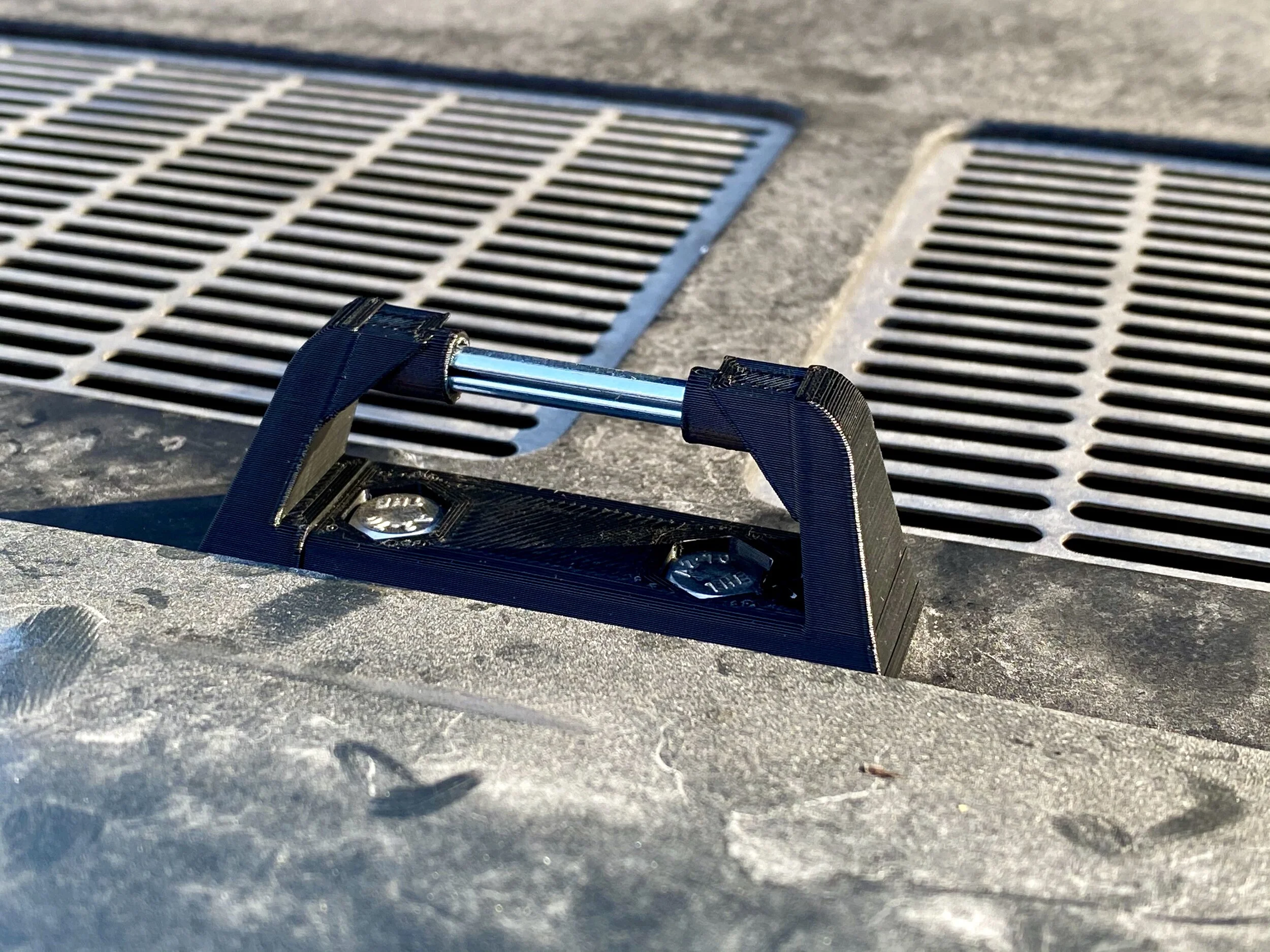3D Printed Louver Striker
Joe Angell
The louvers on my car have never properly engaged with the latch. I honestly don’t even think it really needs a latch, as the lift pistons hold it down pretty well anyway. More important to me is when the cover is open.
I have the DeLorean louver brace mounted to my louvers. A feature of this is a notch that the engine cover’s striker bar can hook onto, which raises the cover higher than the stock catch, is easier to engage and disengage, and doesn’t flex the cover like the stock one does.
For some reason, my louvers don’t open far enough to allow the stricter to engage the notch. On top of that, the fiberglass where the bar mounts through the engine cover is wearing away, so a new striker isn’t going to hold very well. So I decided to print one.
The new bar is made of 3D printed ABS plastic for heat resistance, with 100% infill to make it as strong as possible. It’s a simple design, and uses two M6 bolts to secure it to the engine cover. I also printed a U brace for under the cover that the nuts press against, thus reinforcing the and avoiding further damage.
This works rather well, since it is plastic the bar may eventually snap in the notch while setting it up or taking it down. I’m considering redesign it a bit with a metal bar instead of a plastic one, but for now it’s fine. I may also design one with a second bar that actually hooks onto the louver latch, too, since the new bar position doesn’t seem to match the striker either.
For now, though, it does what I need it to do — secure the engine cover against the louvers when it’s raised.
UPDATE: March 2020
As sort of expected, the plastic bit that hooks onto the engine cover latch didn’t last too long, so I designed a new two piece unit with a metal bit for the hook.
The bar is a bit more obviously broken here. While it looks like it’s just bent and worn, there’s a clean break. It still holds the cover up even when broken.
Another view of the failed plastic design, showing wear on the bar.
The new design has top and bottom pieces, each of which have a vertical arm that holds an end of the pin. the pin itself is a roll pin I bought at Lowes that has the same diameter as the one I printed before (about 5mm). The bolts go through both pieces, making them as secure as possible. The underprice from the original design is reused here.
This design seems fairly robust and shouldn’t fail as easily as the old one. The weak point is the plastic holes that the roller pin fits in, but they should be able to take the load without too much trouble. I’ll reinforce them if this design fails as well.
After printing and before assembly. The bolts go through both pieces, and the pin is held in place by holes in the ends of the arms.
Test-fit assembled design.
Installed on the engine cover.
Holding up the engine cover. I need to repaint my bracket at some point…
